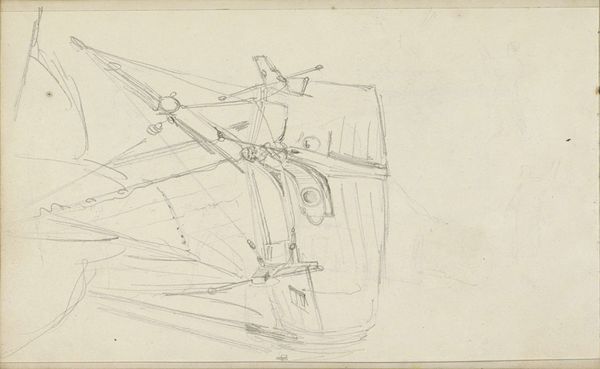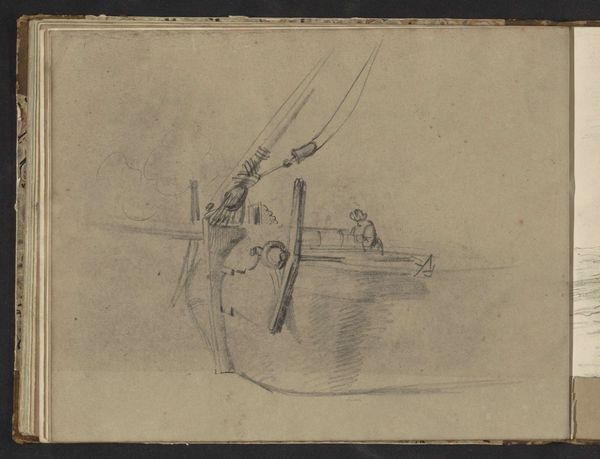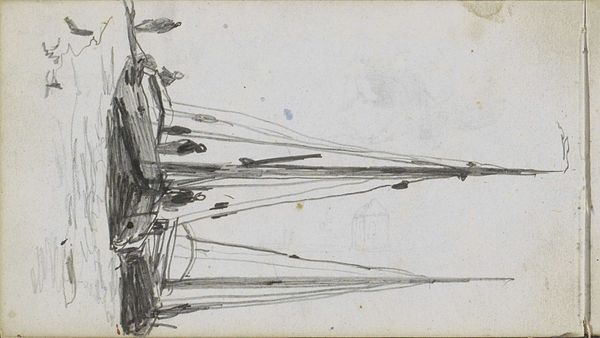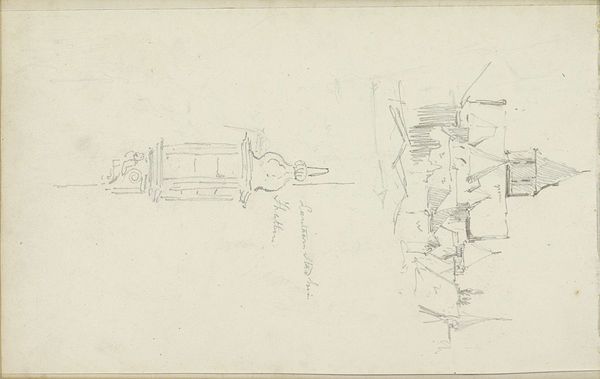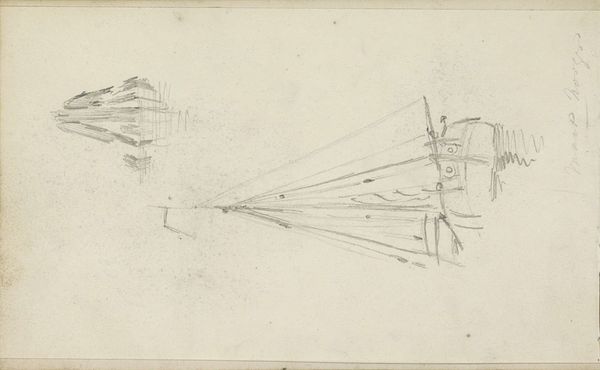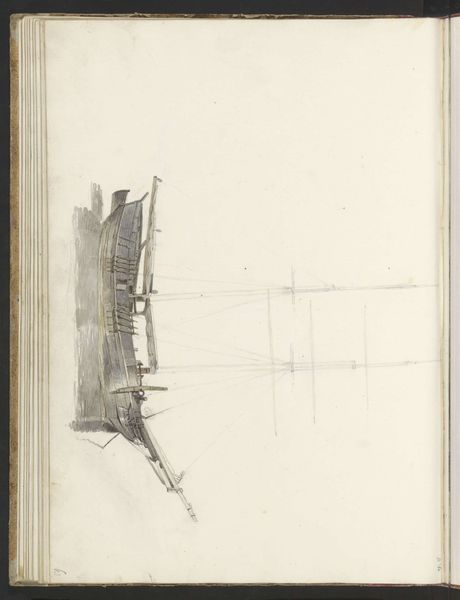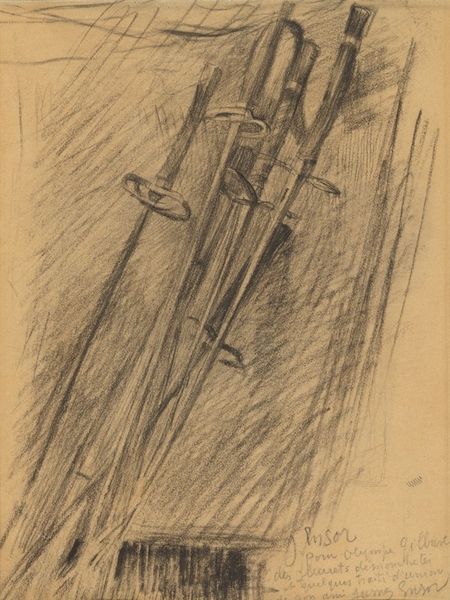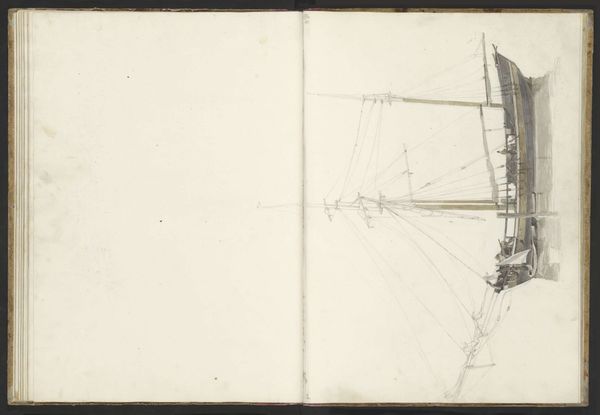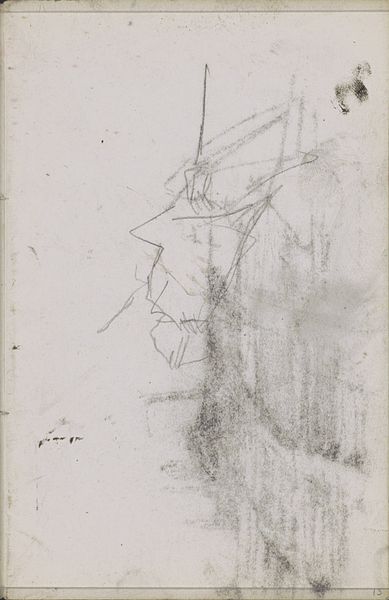
Dimensions: height 209 mm, width 280 mm
Copyright: Rijks Museum: Open Domain
Curator: This etching, "Oorlogsschip in Storm," by Bonaventura Peeters I, created sometime between 1624 and 1652, depicts a warship caught in a storm. It’s currently held here at the Rijksmuseum. Editor: My first thought is disorientation. The stark greyscale contrasts create a powerful sense of unease, a precarity that makes you feel like you are actually on that ship. Curator: Exactly. Consider the context: The Dutch Golden Age was fueled by maritime power and colonial exploits, yet that prosperity was inextricably tied to environmental forces and the lives risked at sea. Editor: The material fragility is striking. We have an image of a ship, ostensibly constructed to exert control over the oceans and the passage of goods, rendered through very delicate pencil and etching techniques. Curator: It really pushes the line between the formal and the political. Peeters does not glorify maritime conquest, but portrays its inherent vulnerability in the face of natural forces. How did global trade influence art practices and what perspectives does that introduce to contemporary social theories and historical viewpoints? Editor: And look at the level of detail in the rigging, the almost obsessive rendering of each line—it emphasizes the labor required to build and maintain such a vessel. It also alludes to a Dutch context where naval labor was as necessary for its economic success as its resources obtained through colonial channels. The ship becomes this fascinating material composite representing colonial exchange. Curator: These linear forms also draw on geometric foundations. Beyond the narrative, what’s significant is how Peeters frames form within an active political atmosphere, and it really questions the role of aesthetics. Editor: For me, the power here rests in its honesty regarding the materiality of labor—the ship a product of exploitation on every front, even that of the unpredictable seas it endeavored to dominate. Curator: It allows for important and inclusive conversations, connecting not just with its own history, but also encouraging vital perspectives for present discourses. Editor: Precisely. Seeing this fragile vessel reminds us that progress and expansion often depend on the material vulnerability of both people and the planet.
Comments
No comments
Be the first to comment and join the conversation on the ultimate creative platform.

